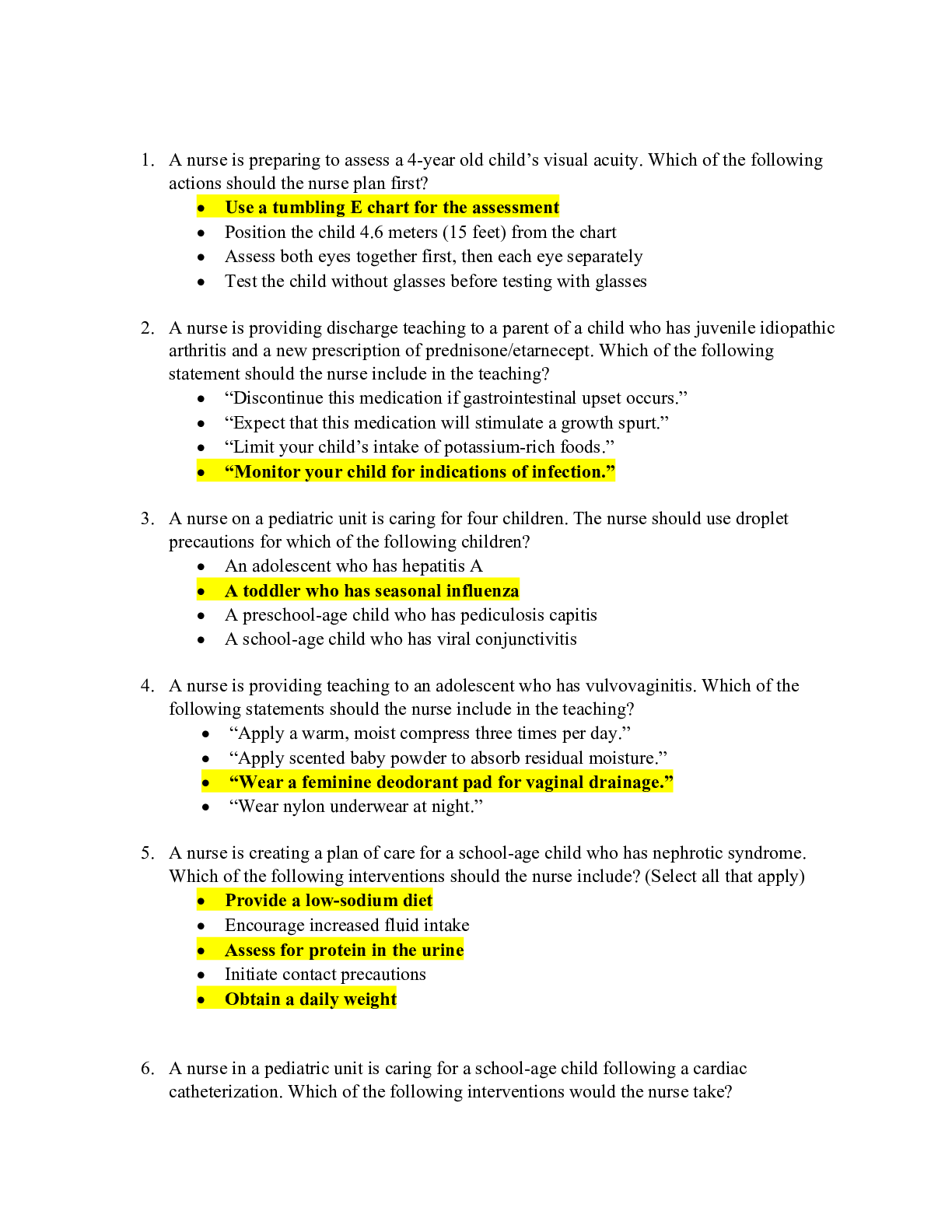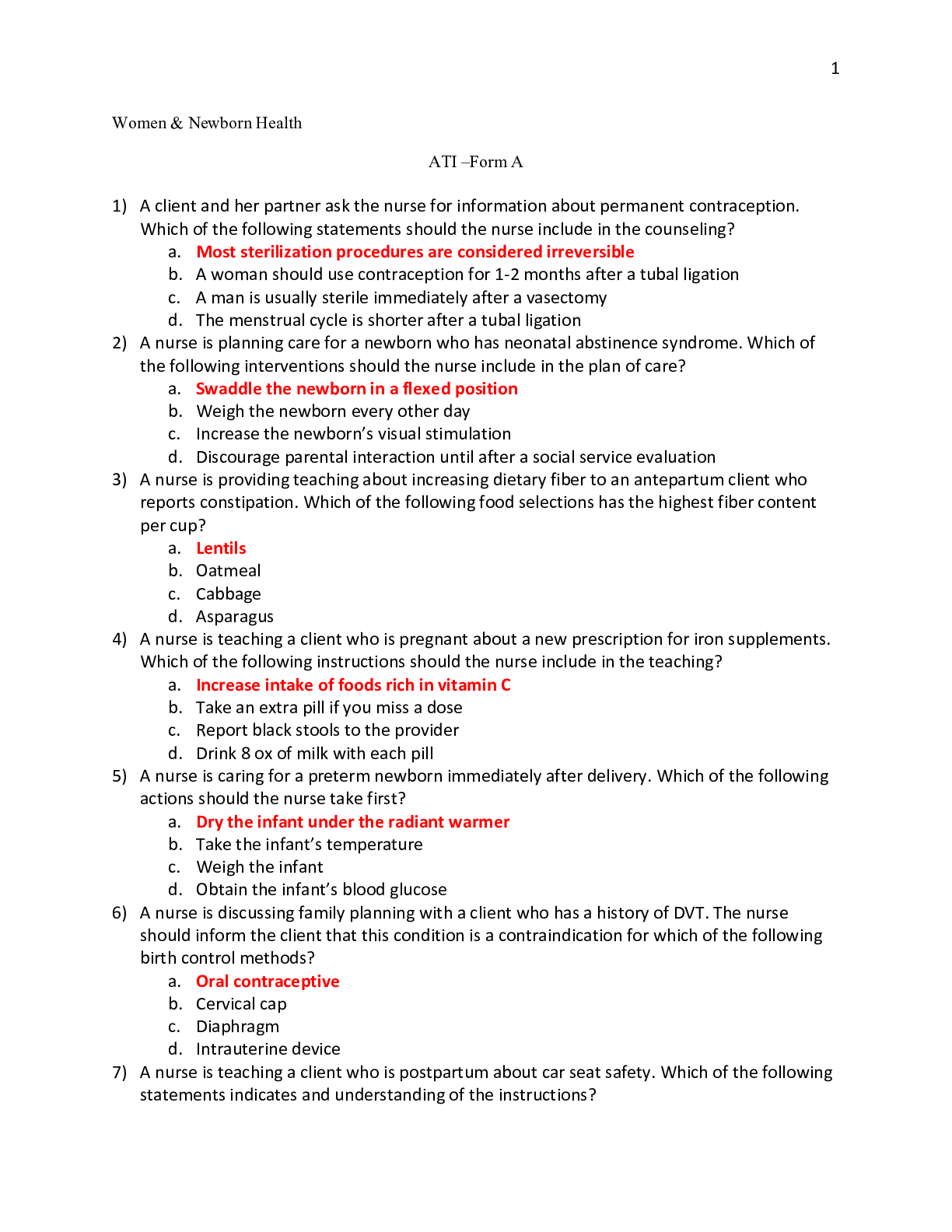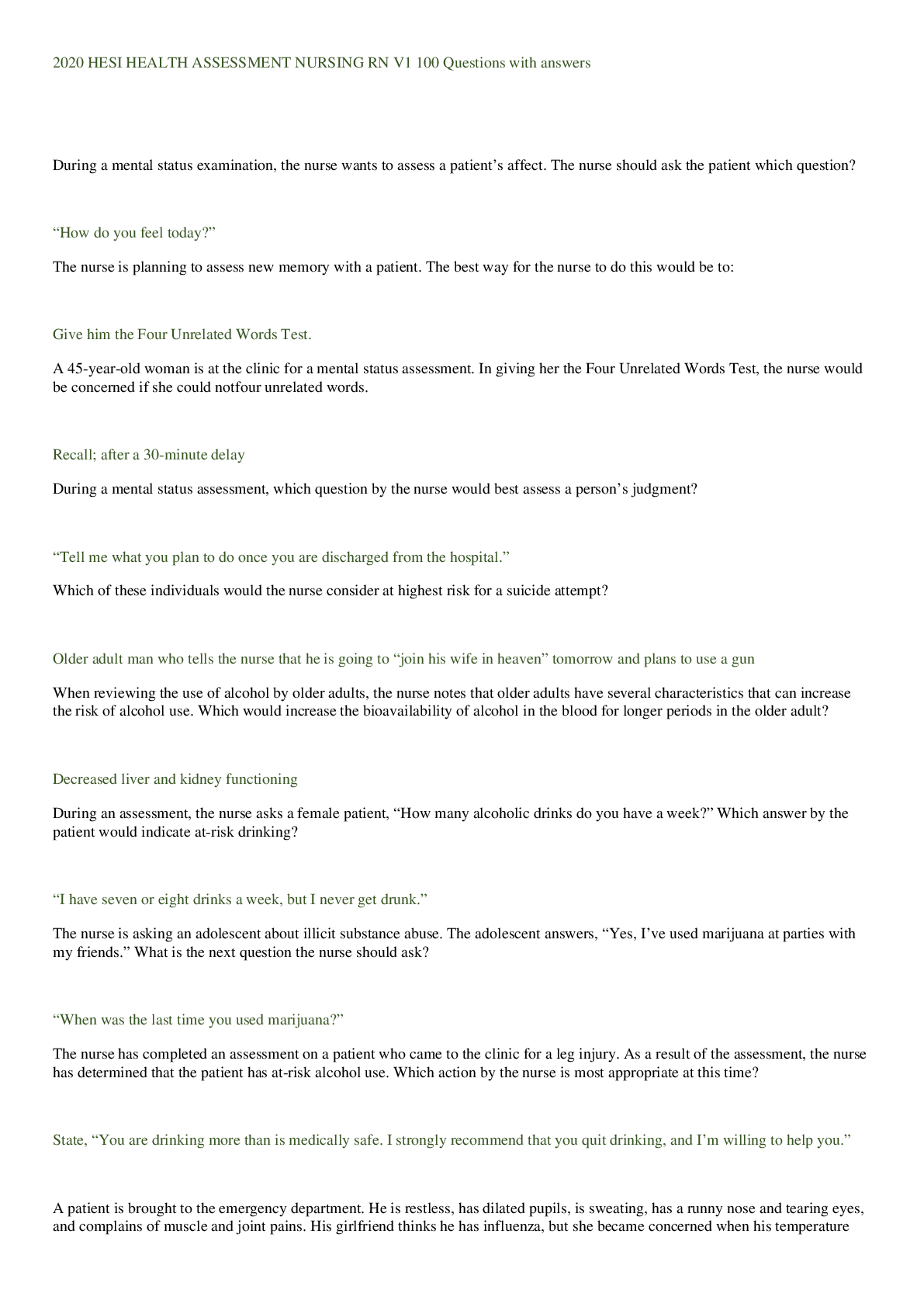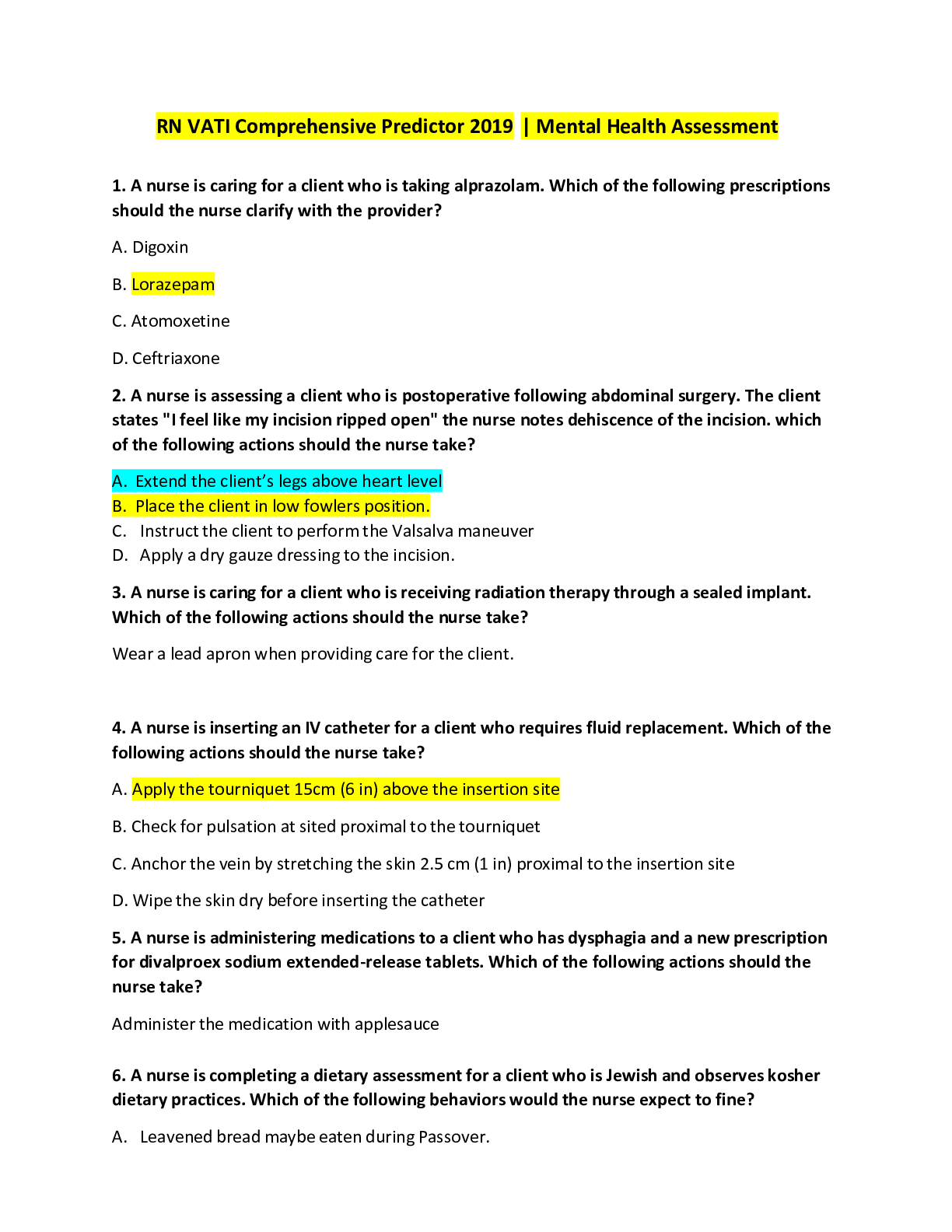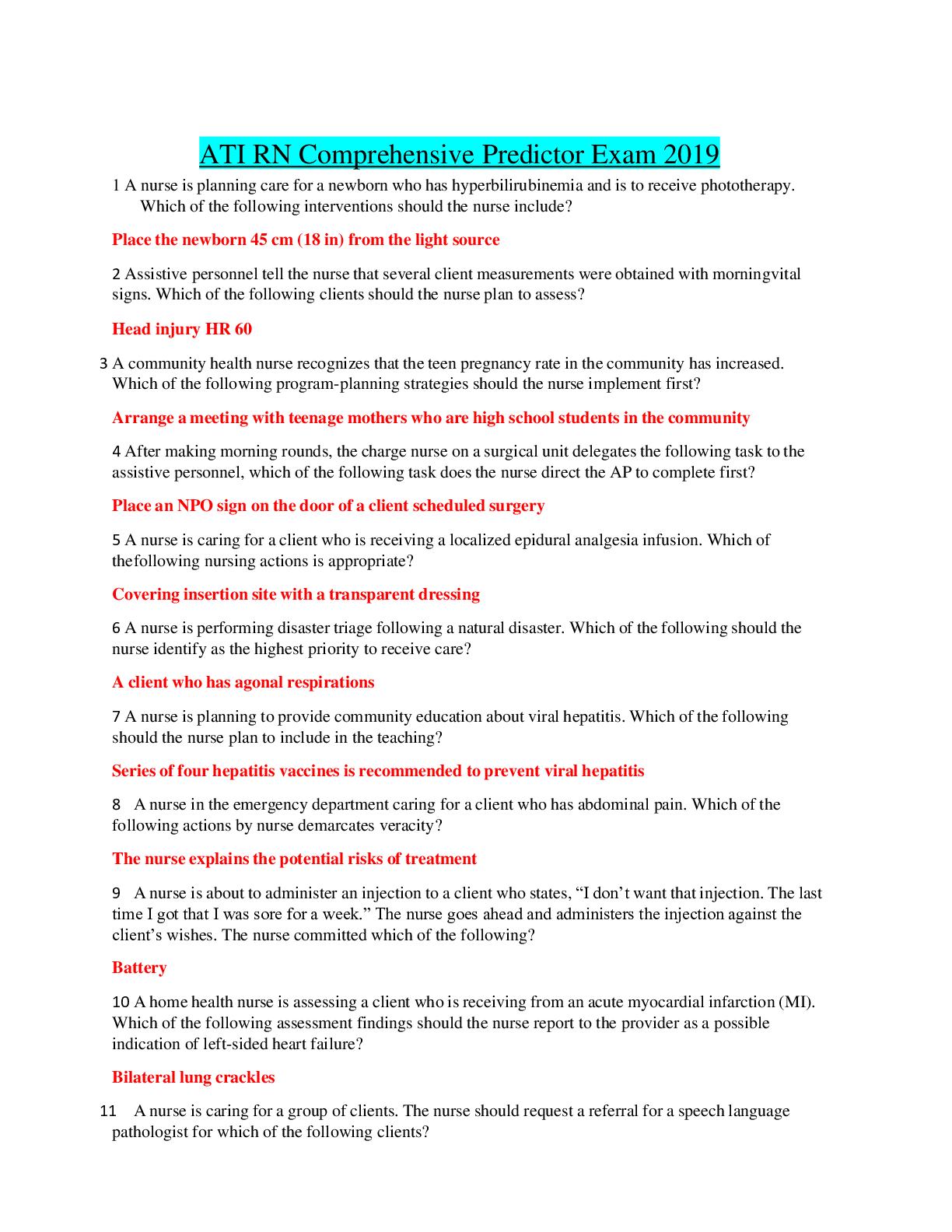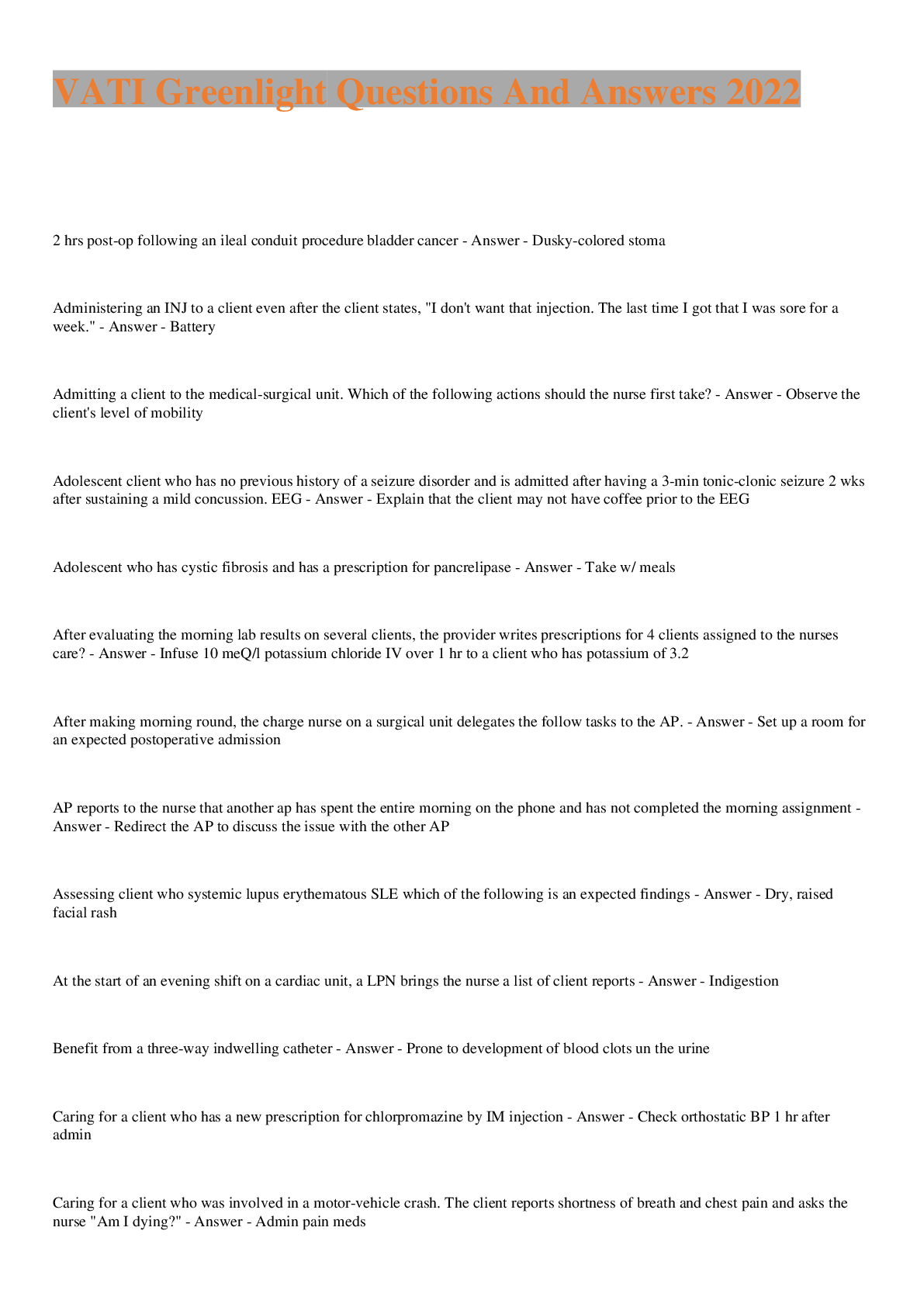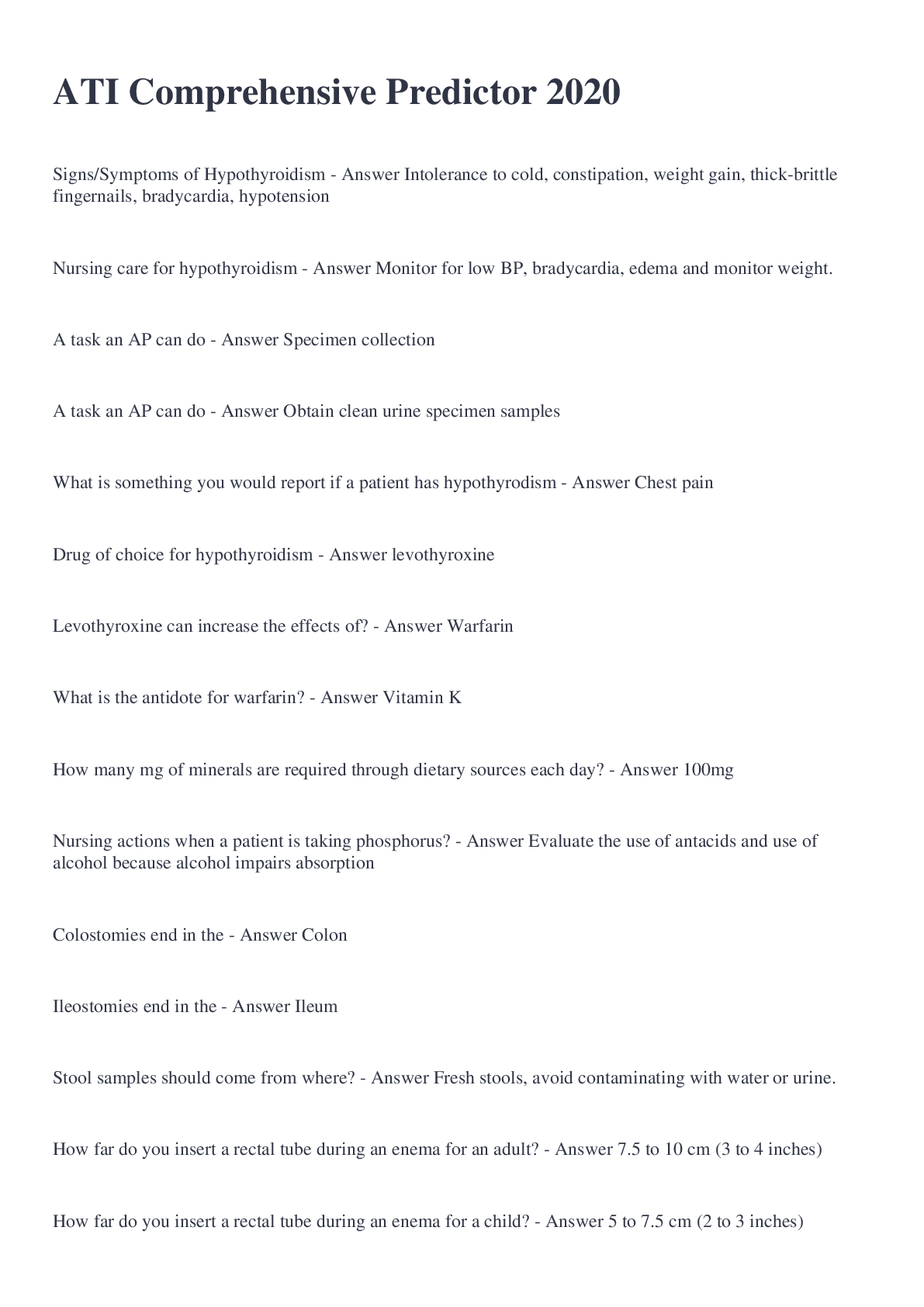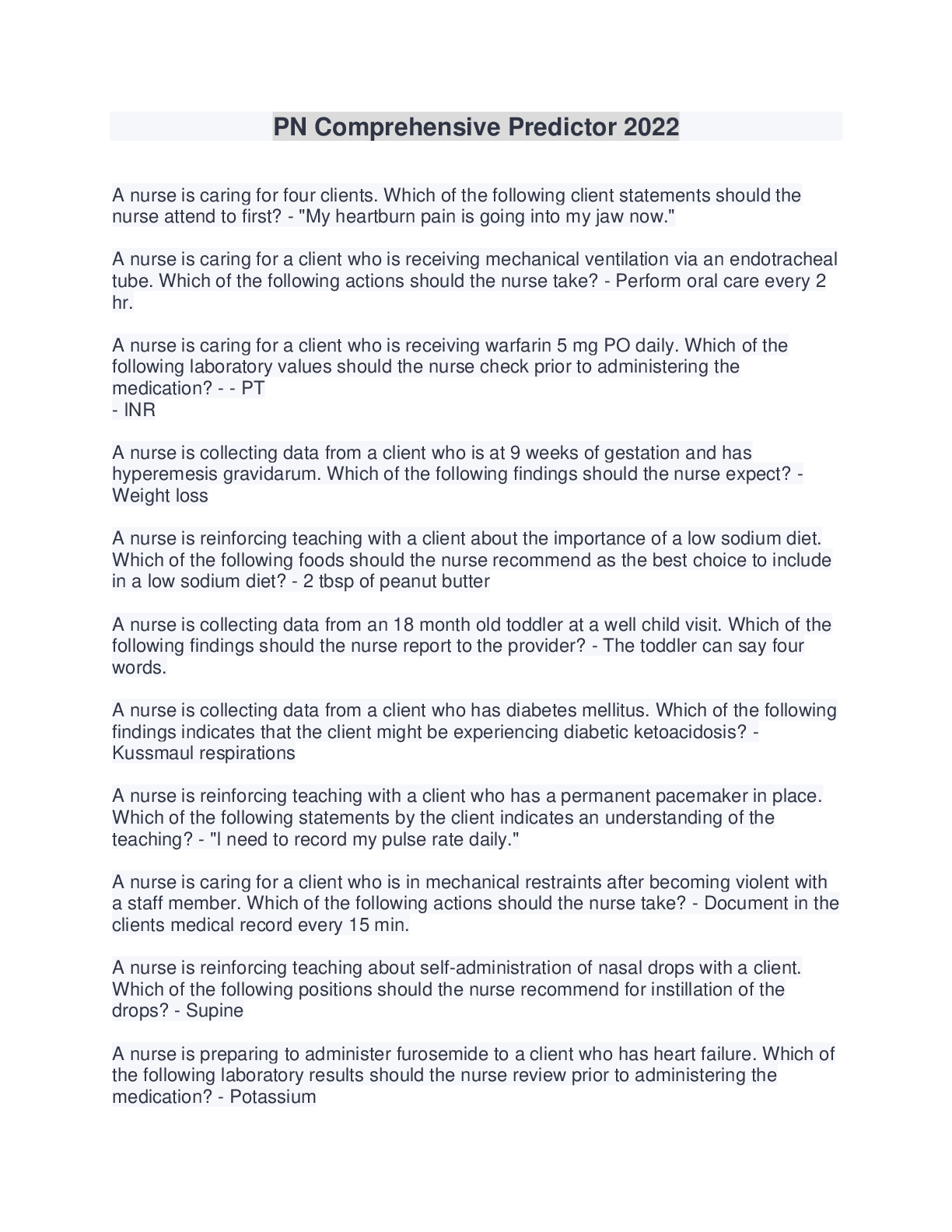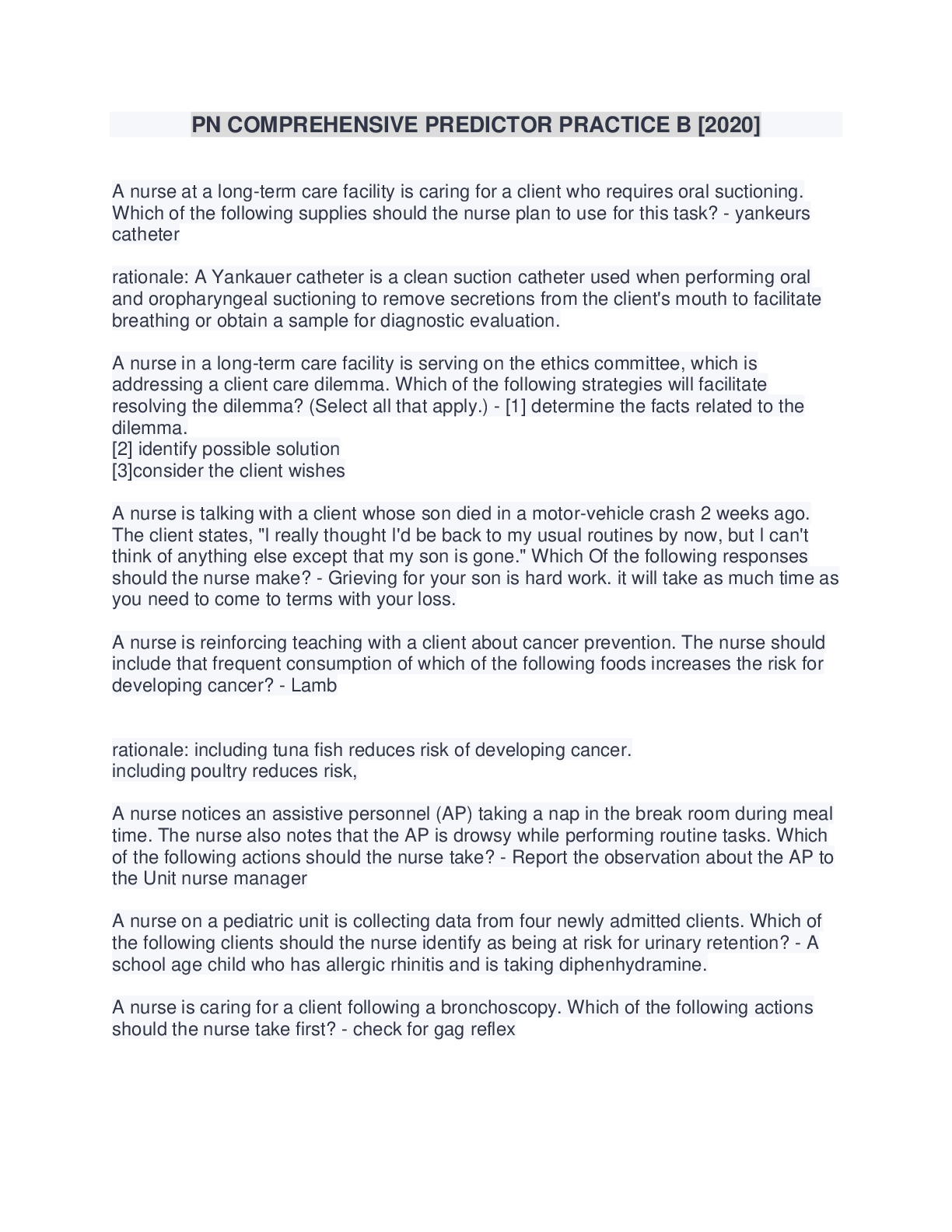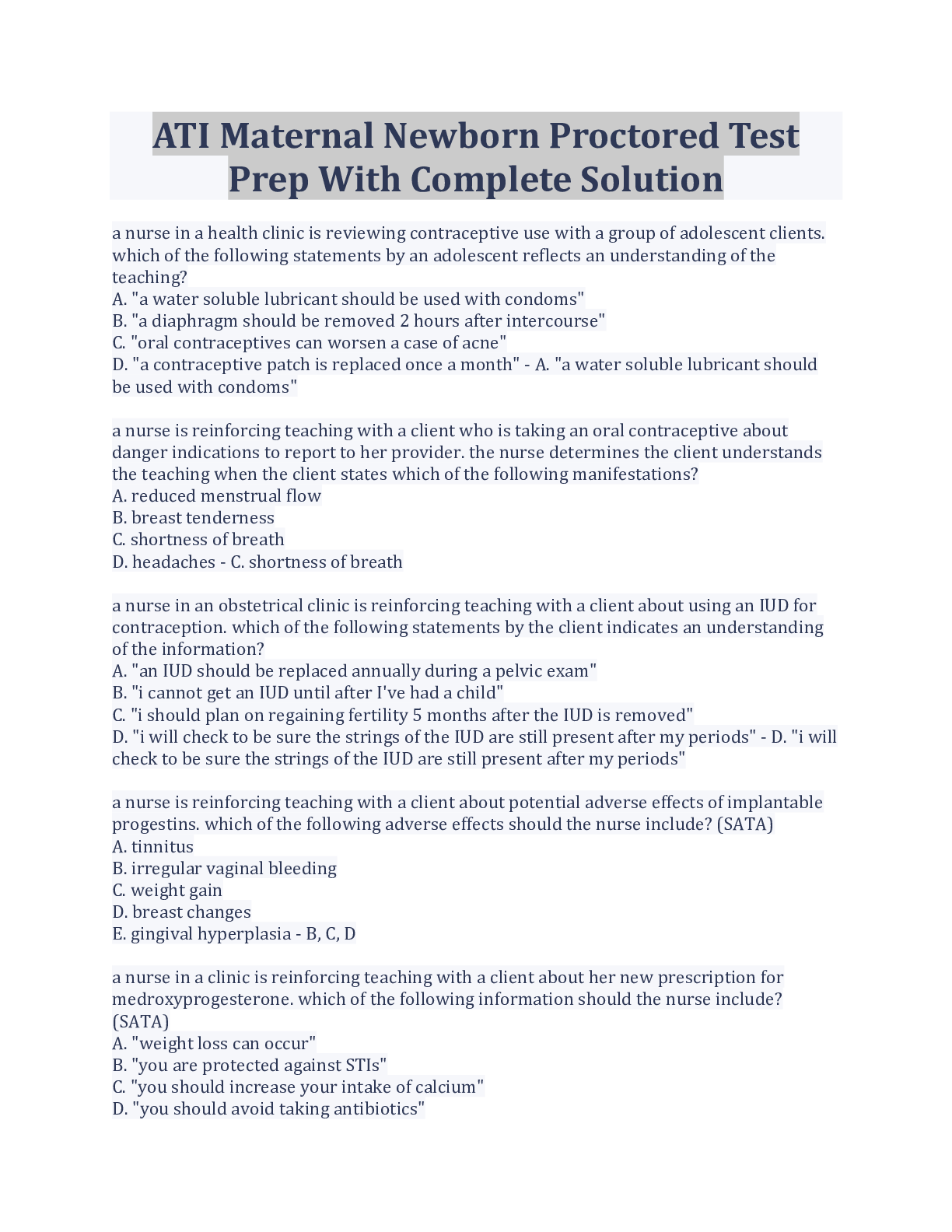ATI MATERNAL NEWBORN PROCTORED TEST BANK All Modules
Document Content and Description Below
1. A woman gave birth to a healthy 7-pound, 13-ounce infant girl. The nurse suggests that the client place the infant to her breast within 15 minutes after birth. The nurse is aware that the initiati... on of breastfeeding is most effective during the first 30 minutes after birth. What is the correct term for this phase of alertness? First Period of Reactivity The first period of reactivity is the first phase of transition and lasts up to 30 minutes after birth. The infant is highly alert during this phase. The transition period is the phase between intrauterine and extrauterine existence. The second period of reactivity occurs approximately between 4 and 8 hours after birth, after a period of sleep. 2. Part of the health assessment of a newborn is observing the infants breathing pattern. What is the predominate pattern of newborns breathing? Abdominal with synchronous chest movements In a normal infant respiration, the chest and abdomen synchronously rise and infant breaths are shallow and irregular. Breathing with nasal flaring is a sign of respiratory distress. Diaphragmatic breathing with chest retraction is also a sign of respiratory distress. 3. The nurse is assessing a full term, quiet, and alert newborn. What is the average expected apical pulse range (in beats per minute)? 120 to 160 The average infant heart rate while awake is 120 to 160 beats per minute. The newborns heart rate may be approximately 85 to 100 beats per minute while sleeping and typically a little higher than 100 to 120 beats per minute when alert but quiet. A heart rate of 150 to 180 beats per minute is typical when the infant cries. 4. A newborn is placed under a radiant heat warmer. The nurse understands that thermoregulation presents a problem for the newborn. What is the rationale for this difficulty? Newborns have a relatively thin layer of subcutaneous fat that provides poor insulation The newborn has little thermal insulation. Furthermore, the blood vessels are closer to the surface of the skin. Changes in environmental temperature alter the temperature of the blood, thereby influencing temperature regulation centers in the hypothalamus. [Show More]
Last updated: 1 year ago
Preview 1 out of 138 pages
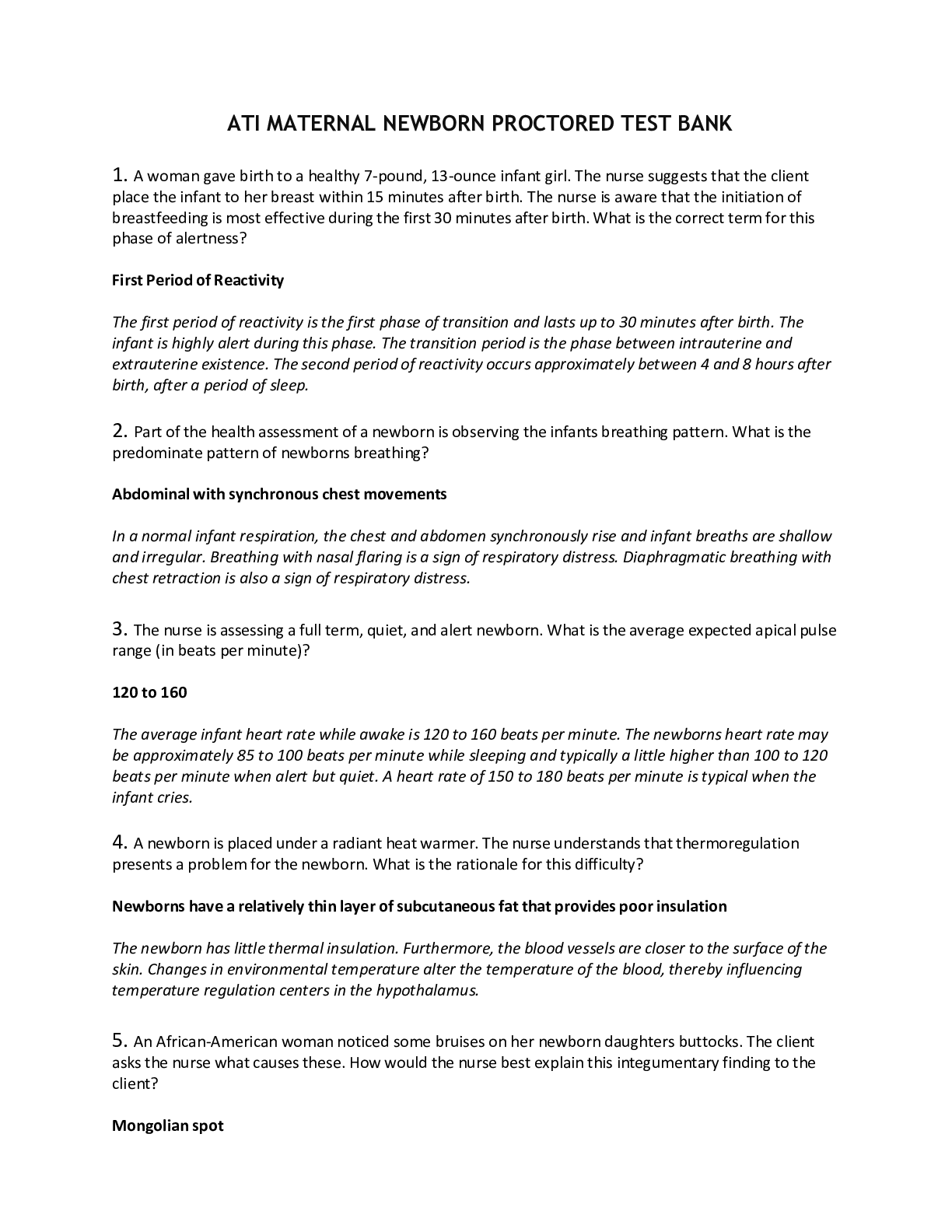
Buy this document to get the full access instantly
Instant Download Access after purchase
Add to cartInstant download
We Accept:

Reviews( 0 )
$12.00
Document information
Connected school, study & course
About the document
Uploaded On
Oct 24, 2022
Number of pages
138
Written in
Additional information
This document has been written for:
Uploaded
Oct 24, 2022
Downloads
0
Views
50

